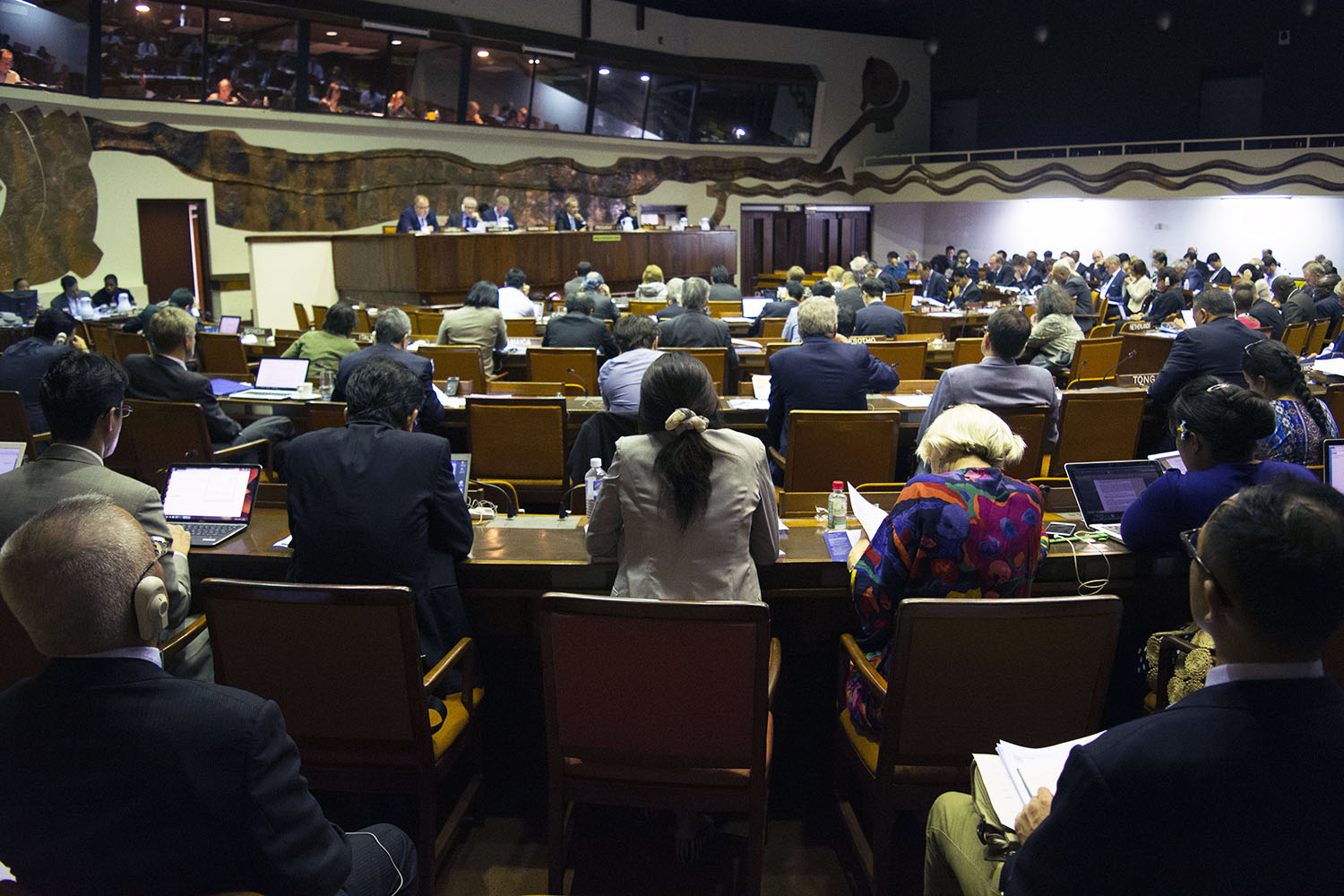In the impressive Department of International Relations and Cooperation in Pretoria, over 80 national delegates, members of the International Seabed Authority Secretariat, contractors, industry professionals, NGO representatives and academics, covering a wide range of skills and expertise, gathered last week. They were tasked with not only prioritizing the list of Standards and Guidelines to support the implementation of the Exploitation Regulations, but also to create a process for their development. They had their work cut out for them, and yet most departed three days later feeling some sense of accomplishment.
While substantial progress has been made since the first issue of the Exploitation Regulations in 2014, the absence of accompanying Standards and Guidelines has called into question whether a functioning regulatory system could exist without everything in place. This workshop was an important milestone towards overcoming that hurdle.
After a series of lectures, panel discussions, facilitated working sessions and much conversation over coffee and cookies, several recommendations were made to the Secretariat. These included a need to focus on the urgent and important, with priority given to Standards and Guidelines on baseline adequacy, environmental objectives, the environmental impact assessment process, preparation of Environmental Management and Mitigation Plans,environmental risk assessments, data access / standardization, application process for plan of work, Environmental Performance Guarantee, and stakeholder engagement.
Additionally, a clear path for the development of Standards and Guidelines was defined that included the Secretary General, the Legal and Technical Commission, the Council, the Assembly, observers, experts and other stakeholders.
There were several common strands that bound together the three days: the need for certainty and clarity but also for flexibility to allow for adaptation and maintenance in the future; the acknowledgement that Standards and Guidelines should be practical, sustainable and proportionate; and the recognition that there are a wide range of existing resources and functions to be borrowed from, such as ISO standards, engineering standards, industry standards, and many others.
To borrow from an African proverb, “If you want to go fast, go alone. If you want to go far, go together.” The importance of partnerships between the Secretariat and all stakeholders, as well as the need to be inclusive throughout this regulatory process, was emphasised many times. Innovative suggestions for facilitating this included smaller focussed technical working groups as well as more agile methods such as video conferencing.
While there was a lot accomplished, the workshop was not without confusion. There was uncertainty over Standards and Guidelines terminology, the binding or non-binding status, knowledge gaps especially related to the environment, and outcome- versus performance-based Standards. But for many, the sentiment was that while there are still many unknowns in this developing industry, that should not prevent us from moving forward responsibly. Robert Heydon of Nauru Ocean Resources Inc. was one of those encouraged by the discussion, “The workshop was a great opportunity to engage with all stakeholders to progress the development of important Standards and Guidelines for the seafloor minerals industry. I was impressed with the desire participants showed to work together towards achieving this common goal”.
Some participants, however, offered a more cautious commentary, especially where environmental Standards and Guidelines were concerned. “We are in a better position. The requirements of what needs to be developed are clearer but it’s going to be a long process. There is a lot of detail that will have to be fleshed out. It’s going to be difficult and challenging given the amount of data and the time frames that we are dealing with,” offered LTC member, Malcolm Clark. Others, including Urs Engels, head of the German delegation to the ISA, showed concern for the impending deadline for the exploitation regulations of 2020. “We have always made it clear that we are willing and eager to help regarding the mandate and activities of the Authority, but we want the quality of the Mining Code to come before our jointly felt sense of urgency”. For now, it is about moving past the high-level principles to getting down to the nitty gritty that will help in the operationalization of deep seabed mining.
There is hope, that despite the mammoth task facing the Secretariat, a clear path forward and well-defined timeline will aid in the adoption of these critical documents. We are now one small step closer towards balancing the economy with the environment.





